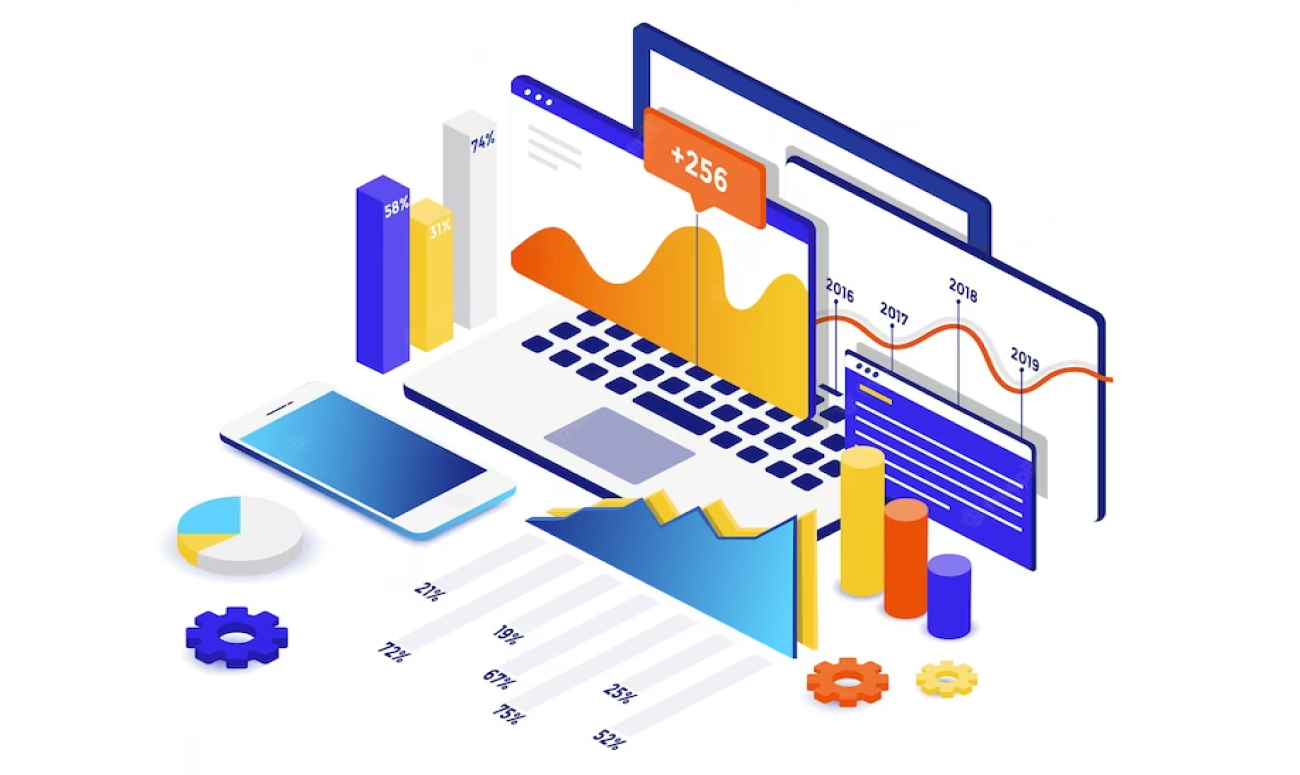
In today’s competitive business climate, having the right tools and strategies is essential for success. One of the most critical pieces to this puzzle is a landing page powered by Customer Relationship Management (CRM). A CRM-powered landing page can help your business reach customers organizationally and efficiently by leveraging powerful data collection and analysis tools and automated outreach campaigns. With this single platform, you can create customized customer experiences that build loyalty, increase revenue potential and differentiate your company from competitors. In this blog post, we’ll discuss why using a CRM-powered landing page can benefit your business goals and provide tips on setting up one yourself. Read on to learn more!
What exactly is a CRM-powered landing page?
A CRM-powered landing page, lead capture, or destination page is a web page a user directs to after clicking on a link or call-to-action (CTA). It converts visitors into leads or customers. Landing pages are usually standalone pages, meaning they don’t have a menu or any other navigation that would lead the visitor away from the page. The main objective of a landing page is to encourage the visitor to take a specific action, such as filling out a form or making a purchase. It collects information from visitors, such as their email addresses or other contact details, in exchange for something of value, like eBooks or discount codes. Visually appealing landing pages are more likely to engage your audience High-converting landing pages can capture more leads, nurture relationships, and promote your products or services more efficiently.
You can find Landing pages on various websites, including eCommerce sites, SaaS companies, and marketing agencies. They are often used in digital marketing campaigns, such as pay-per-click (PPC) advertising or email marketing campaigns, to drive traffic to a specific page and encourage conversions.
For example, imagine a company promoting a new eBook on its website. They create a landing page for this eBook that highlights its benefits, includes a form for visitors to download, and provides social proof through testimonials from previous readers. This landing page focuses solely on the eBook and drives conversions by encouraging visitors to download it.
Importance of CRM-powered landing page
Landing pages are an essential tool in the digital marketer’s arsenal. When designed correctly and used with a well-crafted campaign, they can be a powerful way to drive conversions and achieve business and marketing goals together.
CRM-powered landing pages offer several advantages over traditional web page designs, including:
• Automation of customer segmentation and personalization.
• Real-time data collection and analysis from multiple sources.
• Advanced targeting and tracking capabilities.
• Accurate lead scoring and qualification.
• Automated outreach and marketing automation campaigns.
• Improved customer engagement and loyalty.
These features make creating highly-targeted, personalized customer experiences that build trust and drive conversions easier. For example, you can use CRM data to segment customers into groups based on their behavior or interests and then tailor the content of your landing page to that specific group. This segmentation allows for a more personalized experience and helps to convert visitors into leads or customers.
Types of CRM-powered landing page
Landing pages are essential to any digital or marketing automation campaign because they serve as the initial point of contact between a company and its prospective customers. Various types of landing pages meet specific, email marketing campaigns and marketing automation campaigns’ needs.
Click-through CRM-powered landing page
This landing page provides potential customers additional information about a product or service before taking them to the final conversion page. The click-through landing page warms up potential customers and provides them with further details before they commit to purchasing.
Lead generation landing page
This type of landing page has a form or questionnaire that website visitors must fill out before they accessing content. This type of landing page aims to capture the website visitors’ contact details, allowing businesses to follow up and engage with them for potential conversions.
Squeeze page
The squeeze page has a single objective: to capture visitors’ email addresses. The page could contain an attractive offer, such as a discount or deal, in exchange for the visitor’s details.
Sales page
This type of landing page persuades visitors to convert or make a purchase, whether it is a product or service. Sales pages are typically longer than other forms of web landing pages and include compelling copy and graphics to persuade visitors that the product or service offers the solution to their problem.
In conclusion, understanding the various types of landing pages and their specific purposes can help businesses create effective digital marketing campaigns and create landing pages that generate quality leads, convert, and drive conversions.
Characteristics of effective CRM-powered landing page
Creating effective landing pages requires knowledge of the customer’s needs and understanding of how to communicate with them through visuals, text, and other elements. The following are the key characteristics of effective landing pages:
• Clear and concise value proposition.
• Compelling visuals such as images or videos that draw attention.
• Targeted a marketing automation platform is messaging that speaks to the customer’s needs.
• Strong call-to-action buttons.
• Minimal clutter and distraction on the page(Include one CTA or objective)
• Fast loading time and easy-to-navigate user interface
• Mobile-friendly design for all devices.
By employing these techniques, digital marketers can create relevant and engaging landing pages email campaigns that will help capture leads, convert, and drive conversions.
Using a CRM to Create Landing Pages

Using a customer relationship management (CRM) tool can make it easier to create and manage landing pages and optimize your email marketing campaigns.
Benefits of using a CRM for landing page creation
Using a CRM system for landing page creation has various benefits that can help businesses create, manage, and analyze high-converting landing pages.
Firstly, a good landing page CRM tool centralizes everything in one place, which helps craft the design and messaging of your own landing page content and to create custom landing pages for yourself. You can use ready-made templates or build them from scratch, and the software will enable you to create visually appealing landing pages, whether you possess technical web-design skills or not.
CRM software provides access to extensive, customer data and profiling that helps businesses segment customers by interest, demography, behavior, and more. You can personalize the content of your landing page marketing, to suit the specific needs and wants of these segments creating a more targeted marketing campaign. This level of personalization can lead to higher conversion rates by providing the most relevant marketing information to your potential customer’s preferences.
Additionally, CRM software can track website traffic, monitor customers’ spending on your landing pages, A/B testing, and track lead generation and customer conversions. All of these parameters help decision-makers to higher click-through rates and revenue.
Creating a landing page from scratch

Creating a landing page from scratch can be daunting for those unfamiliar with web development. However, with CRM builder software, the process becomes seamless and effortless. Here is how CRM software that works as a landing page builder helps to automate and create landing pages:
Interface without coding
CRM software provides user-friendly, intuitive drag-and-drop functionality in landing page builders that make creating landing pages without technical knowledge or expertise accessible. You can quickly customize your landing page to suit your brand identity, and the intuitive drag-and-drop functionality and interface ensure that your pages look professional and polished.
Responsive Landing Pages
With CRM software, you can create beautiful landing pages, optimized for mobile devices and desktops. This optimization ensures that your pages look great on any device and provide an engaging experience for your customers.
Forms
Adding forms to your landing page is crucial to collect valuable customer data. You can easily add customizable form fields such as name, email, phone number, etc. This way, you can capture leads and start building your customer database.
Products and Services
If you sell products or services, you can easily add them to your landing pages. This feature makes it easy for potential customers to browse your offerings and purchase directly from your landing page.
Coupons
Adding coupons to your landing page can entice customers to purchase. With CRM software, you can easily include coupon codes or discounts to encourage customers to take action.
call-to-action (CTA)
A call-to-action (CTA) button effectively leads customers through the sales pipeline. With CRM software, you can easily add CTA buttons to your landing page that will direct customers to take action and convert. Add only one CTA button per page for an effective landing page and more conversions.
In conclusion, using CRM software to create custom landing pages, can save time and effort and result in professionally designed custom landing drag and drop in pages matching our branding.
Use pre-built templates for landing pages.

Using pre-built templates for landing pages is a great way to create professional-looking webpages quickly and easily. CRM software makes selecting and customizing a template with your branding and information accessible. This facility eliminates the need to hire a web designer or have coding knowledge.
Using pre-made templates can save businesses both time and money when optimizing marketing campaigns. They allow you to quickly customize the design and messaging of your page without needing any HTML or CSS skills. In addition, these templates often come with extra features such as forms, product lists, coupons, countdown clocks, and more with a few clicks.
CRM software also allows businesses to track the performance of their landing pages by monitoring lead generation, time spent on the landing page software itself, A/B testing results for various changes made over time, and conversion rates for leads from different customer segments. This testing helps decision-makers adjust their web front strategy according to what works best for their various audience segments and optimize campaigns for higher click-through rates and revenue.
Optimizing Landing Pages for Conversions
The main goal of a landing page is to convert visitors into customers. Therefore, businesses must ensure to optimize their landing pages for conversions. CRM software helps companies to optimize their landing pages by providing easy-to-use analytics. Here are a few parameters for optimizing landing pages for more conversions:
Conversion rate optimization (CRO)
Conversion rate optimization (CRO) is crucial to successful landing page design. It focuses on improving a website’s performance by addressing customer behavior and providing an optimized user experience that increases conversions. CRO leverages analytics to identify areas to improve and then puts those changes into effect.
Key performance indicators (KPIs) for landing pages

Key performance indicators (KPIs) for landing pages provide insights into how successful a page is in converting visitors into customers. KPIs can include the number of visitors to the page, bounce rate, average time spent on the page, click-through rate, conversion rate, and more.
Techniques for improving landing page conversions
One of the most effective techniques for improving landing page conversions is A/B testing. A/B testing allows businesses to test different, professional landing pages and page elements to see which version produces the highest conversion rate. That can include changing headlines, images, copy, or calls-to-action (CTAs). As a result, businesses can optimize their professional landing page software and pages to reach their desired goals by testing different versions and measuring the results.
Other techniques for improving landing page conversions include using persuasive content and visuals to create professional landing pages, creating a sense of urgency, providing social proof, optimizing mobile devices, and adding customer testimonials.
Examples of successful landing pages
Successful landing pages are crucial for the marketing process of attracting potential customers and converting more leads them into loyal users. Here are some examples of landing pages that have successfully achieved this goal:

Airbnb
Airbnb’s landing page is simple yet effective. It provides a clear call-to-action button that entices users to book a stay. In addition, using visually appealing images, concise copy, and social proof in the form of reviews and ratings helps build trust with potential customers.
Slack

The landing page for Slack presents the app’s benefits clearly and concisely. The headline and subheadline focus on the critical feature of the app – communication – while the imagery reinforces the message. Using social proof in the form of customer testimonials helps build trust with potential customers.
Dropbox
Dropbox’s landing page clearly explains the app’s features and how they solve everyday problems. The use of GIFs and videos helps to explain complex features visually, while the headline and subheadline communicate the value proposition.
To create successful landing pages, focusing on critical factors such as providing clear and concise messaging, using visually appealing images and multimedia, and incorporating proof to build trust with potential customers is crucial. Additionally, providing a clear call-to-action button and emphasizing the value proposition can significantly improve the chances of converting visitors into loyal users.
Measuring Landing Page Performance

To measure landing page performance, follow these steps:
Set clear goals: Establish clear goals for your landing page before measuring performance. For example, what action do you want visitors to take? What metrics will you use to determine success?
Analytics of your landing page content and pages: Review the data to determine what works and what doesn’t. Make adjustments based on your findings. Monitor your landing page content’s performance by tracking key metrics such as page visits, bounce rate, click-through rates, conversions, and more.
Track conversions: Set up conversion tracking to measure the number of visitors who take the desired action on your web landing page, such as filling out a form or purchasing.
Monitor bounce rates: The bounce rate measures the percentage of visitors who leave your landing page without converting. A high visitor exit rate may indicate that your landing page must engage visitors effectively (track engagement).
Test different elements: Use A/B testing to compare different landing page versions and see which performs better. Test different headlines, images, calls-to-action, and other factors to optimize your landing page for conversions.

By following these steps and regularly monitoring and analyzing your landing page performance (track engagement), you can optimize your landing page for conversions and drive better results for your business. It also helps the sales and marketing team to make better decision-making and helps create landing pages that are more professional landing pages and visually appealing landing pages.
Learn how to analyze metrics and optimize your landing page for enhanced performance – “Crucial Landing Page Metrics You Should Track to Increase Conversions“
Final Thoughts
Scientifically proven to boost lead generation efforts, a customer relationship management-powered full landing page builder can help companies reach their fullest potential. It offers opportunities for personalized attention and increases customer engagement with creative content that appeals to their interests and needs. In addition, a savvy business will combine CRM tools, such as a full landing page builder, with other tools, like web forms, to further create pages with a comprehensive and magical user experience. So there are various landing page builders in the market but if you’re a business looking to take charge of your success and pursue more significant engagement opportunities with customers, you should immediately look into using a CRM-powered full landing page builder for pages and level up your lead generation efforts for engaging web experiences.